 The two main differences between quartz and granite are:
The two main differences between quartz and granite are:
- Granite is porous and quartz is not
- Granite can have more variance than quartz (i.e. more movement)
Having a non-porous material in your kitchen is good for reasons of sanitation, since bacteria and viruses cannot penetrate into your kitchen countertop. Granite on the other hand can have a wilder and indeed organic feel to it.
Price
Depending on which company you buy your quartz from it can vary significantly of course, but generally engineered stone has a price point that is close to granite. Some colors of granite cost much more, some much less, but engineered stone in general is about equal in price to a mid-range granite
Difference in strength
Engineered stone much stronger than granite, while at the same time being easier to shape. Granite tends to be more brittle due to some parts of the slab being denser and having higher or lower iron content in relation to the natural amount of quartz in the matrix.
Drawbacks of Quartz
The biggest complaint about quartz products is that if something does manage to scratch or somehow deface the surface of your counter top, it is almost impossible to repair. This is because engineered stones have a surfacing substance applied to them.
With granite it is possible to repair a chip or fill a scratch and to cover your tracks by surface polishing the material. Afterward the repair can often be unnoticeable. This is something that is difficult or impossible with many engineered stones.
Drawbacks of Granite
Granite counter tops occasionally need to be sealed because they are actually porous. Also over time each color of granite will tend to shift (get one shade darker or lighter, change hue slightly) as it is mined from deeper and deeper in the Earth. So if you ever wanted to replace a piece or add to your job, the odds become increasingly thinner and thinner of finding a good color match, even of the same color.
Quartz countertops are man-made. They are engineered from a mixture of minerals – mostly, but not 100%, quartz. The mineral crystals are ground and mixed with resins, bonding agents and colour. Then they’re compressed and heated until solid and impervious to moisture and bacteria.
Basically, what the manufacturers are doing is mimicking nature. Natural granite is a mixture of stone and minerals bound together by the intense pressure and heat deep in the earth.
Quartz is one of the hardest minerals on earth. Natural granite has a percentage of quartz in it, but it’s never as high as the percentage in engineered quartz countertops – which can be as much as 93%. That’s what makes quartz countertops so durable and scratch resistant.
The appearance of a countertop depends on the size of the quartz crystals used – fine crystals will look more uniform than larger ones. And the colour of a counter, since it’s manufactured, will be consistent through the whole countertop. The colour you see on the sample chip is the same as you’ll get in your kitchen.
Every piece of granite, since it’s natural, is unique. Which means the little sample pieces you get to choose from might not represent what your whole counter might look like.
When it comes to choosing between granite and quartz, think about your kitchen design and your taste. If your countertop is a complex shape and will need lots of pieces and cuts, odds are those seams will be more noticeable in granite than in quartz. Since a granite countertop is a cut slab of rock, it’s not going to be uniform. Quartz will be consistent throughout in pattern and colour, so seams are easier to match and hide.
What I look for in a kitchen counter is that it’s easy to keep clean. You want to make sure it’s non-porous, so bacteria can’t get into it. Some counters I’ve seen are so porous it’s scary: preparing food on them is as unhealthy as wiping your counter with raw chicken.
Quartz countertops are non-porous and impervious to bacteria. That doesn’t mean germs won’t live on the surface – it means they won’t penetrate into the countertop.
Granite also needs very little maintenance. Many quartz countertop manufacturers make a big deal about how “porous” and “soft” granite is in comparison to quartz. It’s a marketing strategy for manufacturers of a competitive product.
Yes, granite does need to be sealed every year, but it’s not a big deal – it’ll only take an hour or so. It’s not high-maintenance.
But, for some people any maintenance is too much maintenance. Yes, it’s true, unsealed granite is more porous than quartz, so don’t forget to seal your granite!
We often hear that quartz countertops are more green than the alternatives. Granite has to be quarried from the earth, and shipped long distances, which makes it not very green.
Quartz is also natural – in fact it was originally mined. But, since it’s a by-product of industry (often crumbly rock too brittle to be used as slabs) it’s easy to spin it as “greener.” Processing and reusing this post-industrial waste keeps it out of landfills.
But the processing to make the quartz into a countertop is very energy intensive. Also, the resins used to bind the ground quartz are likely to be high in VOCs, so don’t be taken in by a green wash.
Engineered stone countertops are a great product: durable, beautiful and long-lasting. They are heavier than granite and they take highly trained and certified professionals to install them – definitely not a DIY project. And, they are expensive – they’re at the upper end of countertop options. But like with most things, you get what you pay for.
Stains
Generally, Granite does not stain. All stone, however, is porous to some extent, but granite has very little porosity.
Most colors will never show any moisture. A few colors may show some moisture if exposed for a period of time. For example, a puddle of water left on the counter for 30 minutes for some colors, may show a dark spot when the water is wiped away. This spot will then dry up and no evidence will show. Only a few colors demonstrate this trait. It is very important that the homeowner seals the granite surface & grout at least every year.
Removing stains from granite countertops can be both a challenge and a puzzle at the same time. In order to remove a stain, you need to ensure that it is indeed a stain and not damage to the stone. Next, you need to determine what caused the stain so that you can apply the correct materials to remove it. Here are guidelines for determining the problem and the necessary steps to resolve it.
Stain or Damage?
Use these guidelines to determine whether the spots you are seeing are in fact stains or if they are areas of damaged stone. If you are unsure, consult a trained specialist before proceeding.
Stains:
- Discoloration from the stone absorbing a staining agent (coffee, tea, oil, etc.)
- When the staining agent is removed, the stain is gone.
Damage:
- A change in the natural chemical makeup of the stone.
- Not caused by the stone absorbing an agent, but rather caused by damage to the surface.
- Corrosion, typically caused by acids, leaving “rings” or “water spots” that cannot be removed.
- You cannot remove a “stain” that is actually damage as it requires repairing/removing the damaged area.
- It needs to be determined if the damage is to the stone or to the protective coating/sealant. (Some types of granite do not require sealants and when they are applied, they become damaged and look as though the area is stained.)
Removing stains requires the use of a poultice. A poultice consists of two materials:
- an absorbent material such as Bounty or Viva paper towels, talcum powder or diatomaceous earth
- a chemical to remove the stain.
Water Stains
Most water stains are only a temporary problem. The granite may darken or lighten in color when the water is absorbed into the stone. However, once the water evaporates, the color of the stone should return to normal. To prevent this absorption from happening in the first place, it is necessary to seal the surface of the granite with a high quality sealer. This can be completed on your own or by a professional. If hard water stains occur, they can be removed by applying vinegar to the area using the same methods as above.
Cutting
Cut directly on a Granite countertop surface only if you want to ruin your good knives. Granite is harder than your knife blades and will dull them very quickly if you use the countertop as a cutting surface. Always cut and chop on a wooden or plastic cutting board.
Heat
Granite is formed by a combination of extreme heat and pressure, and thus it cannot be affected by heat from a cook top or frying pan. A lit flame placed under the granite will have no melting effect and will not leave any burned or scarred marks.
Care and Precautions
Use coasters under all glasses, particularly those containing alcohol or citrus juices. Many common foods and drinks contain acids that will etch or dull the surface of many stones. Do not place hot items directly on the stone surface. Use trivets or mats under hot dishes and place mats under china, ceramics, silver or other objects that can scratch the surface.
Clean stone surfaces with a few drops of neutral cleaner, stone soap (available at hardware stores) or a mild liquid dishwashing detergent and warm water. Use a clean rag mop on floors and a soft cloth for other surfaces for best results. Too much cleaner or soap may leave a film and cause streaks. Do not use products that contain lemon, vinegar or other acids on marble or limestone. Rinse the surface thoroughly after washing with the soap solution and dry with a soft cloth. Change the rinse water frequently. Do not use scouring powders or creams; these products contain abrasives that may scratch the surface.
Want to learn more? Contact the team at Stoneworks Granite & Quartz today for a custom countertop quote!
 Whether new or renovated, your kitchen should reflect your taste and personality– the kitchen is the heart of the home! It’s important to ensure you feel comfortable and relaxed in a room that sees everything from parties to pizza nights, from late night snacks to holiday feasts. Read below for five of this year’s most popular kitchen design trends, all of which can bring warmth and renewal to your kitchen.
Whether new or renovated, your kitchen should reflect your taste and personality– the kitchen is the heart of the home! It’s important to ensure you feel comfortable and relaxed in a room that sees everything from parties to pizza nights, from late night snacks to holiday feasts. Read below for five of this year’s most popular kitchen design trends, all of which can bring warmth and renewal to your kitchen.
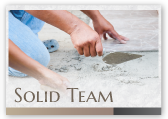
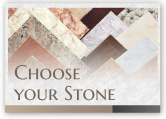

 Gourmet food, fine wine, classical art– we relate all of these things with Italy. The vibrant colours and personalities of the country contribute to the overall sensation we enjoy when it crosses our imaginations. Italy sets trends globally and home design is no exception: Italian
Gourmet food, fine wine, classical art– we relate all of these things with Italy. The vibrant colours and personalities of the country contribute to the overall sensation we enjoy when it crosses our imaginations. Italy sets trends globally and home design is no exception: Italian 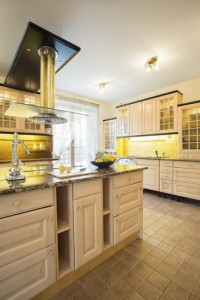 Countertops are an essential part of any kitchen’s form and function. Kitchen surfaces need to be sturdy enough to handle everyday use, while being subtle and stylish enough to remain fresh for years. There is a wide range of options to choose from if you are a homeowner looking to upgrade, renovate or create the perfect kitchen. Here at Stoneworks, we specialize in granite, quartz, onyx and marble. Read on for a summary of the pros and cons of using each product for your next kitchen countertop.
Countertops are an essential part of any kitchen’s form and function. Kitchen surfaces need to be sturdy enough to handle everyday use, while being subtle and stylish enough to remain fresh for years. There is a wide range of options to choose from if you are a homeowner looking to upgrade, renovate or create the perfect kitchen. Here at Stoneworks, we specialize in granite, quartz, onyx and marble. Read on for a summary of the pros and cons of using each product for your next kitchen countertop. The two main differences between quartz and granite are:
The two main differences between quartz and granite are: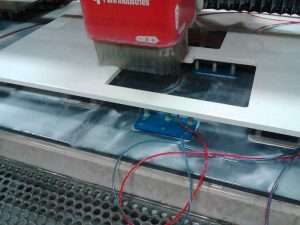 A common problem working with natural stone is, we can’t control what it looks like. As a fabricator, our job is to measure your job, custom cut it to your specifications, polish the edges, and
A common problem working with natural stone is, we can’t control what it looks like. As a fabricator, our job is to measure your job, custom cut it to your specifications, polish the edges, and 
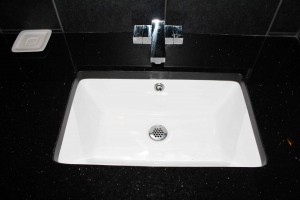
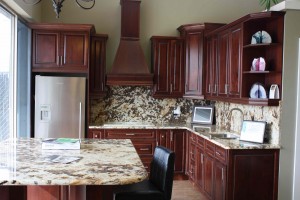 We import much of our granite from suppliers that keep the environment in mind. When they are finished mining stone for your beautiful, natural countertop, they plant trees and other native vegetation in those areas.
We import much of our granite from suppliers that keep the environment in mind. When they are finished mining stone for your beautiful, natural countertop, they plant trees and other native vegetation in those areas.


